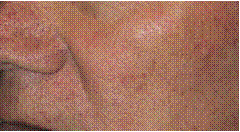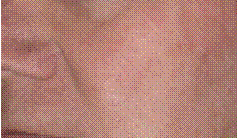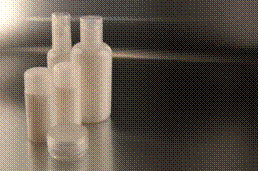Skin Cancer Treatment
Skin Cancer Treatment Options
Modern treatment options mean most all skin cancers can be treated and/or eradicated completely, but they must be treated early, or they can be deadly. Skin cancer treatment options include Mohs Micrographic Surgery, Photo Dynamic Therapy, Laser Surgery, Cryogenic Surgery and Curettage-electrodesiccation among other skin cancer treatments.
Depending on the degree of advancement and the type of skin cancer, several treatment options are available, including:
- Biotherapy or Immunotherapy
- Chemotherapy
- Cryosurgery
- Curettage and Electro Desiccation
- Excision Surgery
- Laser Surgery
- Lymph Node Dissection
- Mohs Micrographic Surgery
- Photodynamic Therapy (PDT)
- Radiation
- Topical Medications
Mohs Micrographic Surgery
- The visible tumor, along with a very thin layer of presumably healthy tissue, is excised, frozen and immediately examined under a microscope for malignant cells. The procedure is repeated until the last layer of tissue examined is tumor-free. This procedure allows for the removal of the smallest amount of healthy tissue. Once clear, the area is closed often with reconstructive techniques to insure the best possible cosmetic outcome.
Photodynamic Therapy (PDT)
- A light-sensitizing agent such as 5-aminolevulinic acid (5-ALA) is applied to the lesion and absorbed by the tumor cells. When exposed to a powerful light source, the chemical is activated and destroys the cancer.

Before PDT

After PDT
Excisional Surgery
- The physician administers a numbing anesthetic before excising the cancer and a safety margin with a scalpel. The area is then closed with stitches.
Curettage-electrodesiccation
- The growth is scraped off with a curette, a ring-shaped instrument, before a burning, high-frequency current is applied to the lesion to destroy any residual tumor and to control bleeding.
Radiation
- X-rays or electron beams are focused on the cancer; the healthy tissue is protected with a lead shield. The procedure is repeated over multiple visits.
Laser Surgery
- Carbon dioxide (CO2) and erbium YAG lasers can be used to evaporate or cut cancerous tissue away from the skin surface.
Cryosurgery
- A cotton-tipped applicator or spray gun filled with liquid nitrogen, cooled to -40°C or below, is applied to the skin cancer tumor for about 30 seconds. The frozen cancer is allowed to thaw for several minutes, then the procedure is repeated two or more times. After several weeks, the dead cancerous tissue sloughs off.
Lymph Node Dissection
- Used in combination with the excision of some melanomas. After surgical removal, the lymph nodes closest to the melanoma may be inspected microscopically to see if the cancer has spread. If the first lymph node (the sentinel node) in the basin is found to be malignant, then the remainder of the local nodes are removed.
Additional Options
Short Term Mole Monitoring
Short term mole monitoring is an additional diagnostic tool used for the early detection of melanoma. It is typically used to monitor a single suspicious growth that lacks definite dermatoscopic features of melanoma. The technique is most often used for changing moles that appear benign with dermoscopy or in the case of certain suspicious moles that have no history of clinical change.
A high resolution digital dermatoscopic image is taken and then photographed again after a 3 month interval. Studies have verified that unchanged lesions are benign and those that demonstrate change are likely malignant. Ultimately, short term mole monitoring allows for the detection of melanoma at its earliest stage and helps avoid unnecessary excisions.
Dermoscopy/Epiluminescence Microscopy (ELM) or Skin Surface Microscopy
Dermscopy, also known as epiluminescence microscopy (ELM) or skin surface microscopy, is a non-invasive technique utilizing a hand held microscopic that allows magnified examination of suspicious skin growths.
Dermoscopy helps to distinguish between benign and malignant skin lesions and has been shown in several studies to increase the diagnostic accuracy of melanoma. This tool allows us to detect melanomas earlier and avoid unnecessary biopsies of benign lesions.
Topical Medications

- Topical medications can sometimes be used For actinic keratoses (AKs) and superficial BCCs
- 5-fluorouracil (5-FU) cream or solution is the most widely used topical treatment; imiquimod cream, which stimulates the immune system to produce cancer-fighting interferon, is also used.
Other Treatment Options
- Chemotherapy, immunotherapy or biochemotherapy are sometimes used for patients with Stage III or IV melanoma



